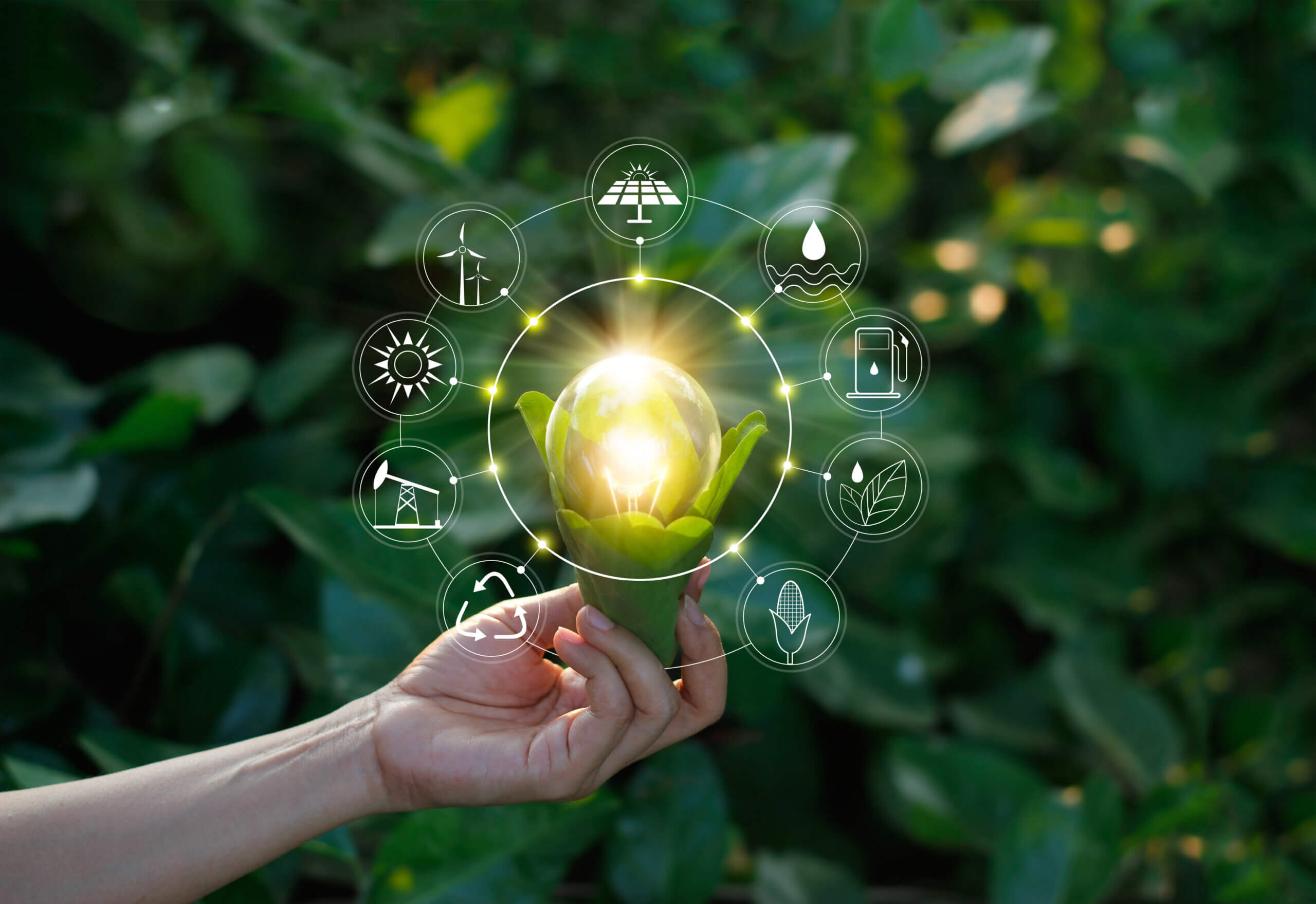Despite the fact that 2020 saw a drop of over 8% in global carbon emissions — the sharpest drop in recorded history — the year was full of setbacks for the world’s sustainability and climate goals. On the plus side, several movements towards a cleaner, greener tomorrow are also accelerating rapidly.
Here are the top three trends that are shaping a more sustainable future for our planet.
1. Renewables And Nuclear Hold Promise For Net Zero Energy
An infographic based on the latest Climate Watch data highlights that energy usage contributes to 73.2% of global greenhouse gas emissions. This is far and away the highest contributor, with the second-highest being agriculture, at 18.4%. So, it comes as no surprise that energy generation has seen the highest levels of interest and progress. In fact, in the past year, we have seen record growth in renewable energy sources such as solar and wind, which grew at 23% and 12%, respectively.
Last year, even while all other energy consumption declined, renewable energy consumption increased by 3%, according to International Energy Agency (IEA) statistics. In fact, electricity generated from renewable sources grew 7%, and the contribution of renewable sources to the global grid rose to its highest ever share of 29%.

Another technology with rapidly mounting interest is “green hydrogen” — hydrogen fuel that is synthesized with energy from low-carbon sources such as wind and solar. The cost of green hydrogen has been steadily decreasing in recent years.
Meanwhile, nuclear power is on the rise again after a decade-long plateau in growth. China and Russia are driving the highest growth in nuclear energy generation, at 5% and 3%, respectively. Between 2020 and the end of 2021, up to 17 new nuclear reactors were slated to go online globally.
While nuclear sources currently generate only 10.3% of the world’s energy, these increases will boost nuclear’s output in developing economies to over 30%. With nuclear and renewable sources combined, low-carbon energy generation exceeds the output from coal plants for the first time ever, saving more than 2,000 million tons of carbon emissions per year.
2. EVs Lead Clean Transportation Efforts
Before the pandemic, transportation accounted for 16.2% of greenhouse gas emissions, with road transport responsible for 73.4% of those emissions. The electric vehicle (EV) is leading the charge in the quest to decarbonize transportation.
Even though global mobility was subjected to huge shocks in 2020, EVs still registered a staggering 43% growth over the previous year. This puts the number of electric vehicles roaming the world’s roads at over 10 million.
This puts into context why 18 out of the world’s 20 largest automotive manufacturers — that account for nearly 90% of global car sales — have switched or pledged to switch, either completely or significantly, to manufacturing EVs in the coming years. Volvo has announced that it will sell only electric cars by 2030, while GM has pledged to switch to a zero-carbon portfolio by 2035.
Others with aggressive electrification plans include Ford, Volkswagen, and Stellantis – the giant joint-venture between Fiat Chrysler and Peugeot. Mounting pressure from government policies to decrease carbon emissions is also an important contributor to the EV revolution.
But consumer concerns related to the limited range of EVs and the slow rate of charging (compared to filling up an internal combustion vehicle) are limiting adoption. Manufacturers are trying to address these through innovations like the solid-state battery, which promises charging times of just 10 minutes to get up to a full battery, and a range of over 300 miles on a single charge. Toyota has even announced plans to debut EVs with solid-state batteries by 2023.
Another significant innovation is the “structural battery”. Such a battery doubles as a structural part of the vehicle, thereby saving weight and promising dramatic gains in the EV range. Tesla announced that it would be using structural batteries in its new cars, reducing weight by 10% and increasing range by 14%.
3. CCUS Promises To Bridge The Carbon Gap
Carbon Capture, Utilization and Storage (CCUS) refers to a set of technologies that capture carbon dioxide from industrial or other emissions, and either upcycle it by using it for other processes, or store it in geological formations to prevent it from getting into the atmosphere.
CCUS is not a new concept but has seen a surge of interest in the last four years. The number of new CCUS projects underway has more than doubled from 20 to 44, representing over $27 billion in investments. Data show that CCUS can capture more than 90% of the carbon dioxide from industrial emissions, which translates to dramatic benefits for sustainability.
For example, at a single typical coal power plant, CCUS technology can prevent more than 800,000 tons of carbon dioxide from entering the atmosphere every year. Innovation in the area of utilization of captured carbon holds the potential to transform CCUS into an economically viable and sustainable process.

The world’s first fully commercial CCUS facility was recently completed in India. At the plant, carbon captured from a coal-fired boiler operated by a fertilizer company is being used to synthesize soda ash – a compound used for a variety of industrial processes, ranging from the manufacture of glass to dyes and food additives.
A promising application for carbon utilization is in the area of building materials, where concrete blocks can be made lighter and stronger thanks to carbon sequestration. CarbonCure is a startup applying this technology by injecting captured carbon dioxide into concrete, making it stronger and also allowing the use of less cement for a given structure.
Summary
One of the silver linings of the pandemic is that environmental awareness amongst consumers, companies, and governments worldwide, seems to have heightened in its wake. A survey of over 14,000 people worldwide found that 93% report increased concerns related to sustainability and climate change, post-COVID.
Searches related to sustainable products — from clothing to food, automobiles, and even buildings — have gone up 71% in 2021. This rising tide of interest in sustainable lifestyles has been accompanied by an explosion of activity and innovation, with energy, mobility, construction, finance, packaging, and carbon capture being the biggest shifts towards a healthier planet.


